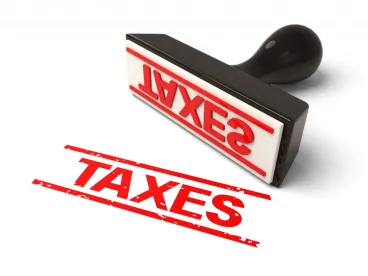As part of the major tax reform bill passed in December, the Tax Cuts and Jobs Act of 2017, Congress created a new program to promote long-term investments in low-income areas by providing the opportunity for taxpayers to re-invest capital gains and defer and/or reduce federal capital gains taxes. The program calls for the designation of “Qualified Opportunity Zones” in census tracts in every state and U.S. territory based on (i) a tract’s status as a low-income community and (ii) nomination by state governors. The designation and certification process of these zones is quickly coming to a conclusion, and market participants are beginning to look toward fund formation and structure under the act.
Although information about the new program is still forthcoming from the Department of Treasury and Internal Revenue Service, early indications point toward a regulatory light touch, with the administration appearing to fully embrace the possibilities of the program and push it forward quickly for maximum benefit to taxpayers and opportunity zone areas.
“Low-income communities” are defined the same way for Qualified Opportunity Zones as for the existing New Market Tax Credit program, i.e., any census tract where (a) the poverty rate for such tract is at least 20 percent, or (b) the median family income for such tract does not exceed 80 percent of either statewide median family income or metropolitan area median family income, depending on census tract location and which median income is greater. For Qualified Opportunity Zones, states were also able to nominate a limited number of tracts contiguous to eligible tracts that did not meet the criteria themselves. Nominations by state governors were due in April, and maps of the designated Qualified Opportunity Zones for each state are available here. Once designated, a census tract cannot lose its status as a Qualified Opportunity Zone for 10 years.
Investment in Qualified Opportunity Zones will center on long-term investment of capital gains into Qualified Opportunity Funds. Specifically, investors that would otherwise be required to recognize capitals gains on their taxes can defer payment of such taxes by investing the capital gains in a Qualified Opportunity Fund within 180 days of the date such capital gain was recognized (i.e., the date of a sale or exchange). If the capital gain investment is held within a Qualified Opportunity Fund for at least 5 years, the investor would receive a step-up in basis on that gain of 10 percent; if the investment is held for 7 years, the basis is stepped up another 5 percent. Finally, if the investment is held within a Qualified Opportunity Fund for at least 10 years,1 the investor would not be required to pay any tax on gains generated by its investment in a Qualified Opportunity Zone (i.e., the taxpayer would only be required to pay tax on the initial capital gains invested with the 15 percent stepped-up basis).
The law broadly outlines Qualified Opportunity Funds as a corporation or partnership that invests at least 90 percent of its assets in qualified opportunity zone property, which can consist of stock, partnership interests, or business property. “Qualified opportunity zone business property” is defined as “tangible property used in a trade or business of the qualified opportunity fund” that (i) was acquired by a Qualified Opportunity Fund after December 31, 2017; (ii) for which substantially all use occurs in a Qualified Opportunity Zone and (iii) the property was either originally used in the Qualified Opportunity Zone after the acquisition or is substantially improved by the Qualified Opportunity Fund after acquisition. For qualified stock or partnership interests, such interests must be acquired by Qualified Opportunity Funds after December 31, 2017, and must be held in “qualified opportunity zone businesses,” which are businesses in which “substantially all of the tangible property owned or leased by the taxpayer is qualified opportunity zone business property,” and that meet certain requirements with regard to the business’s income being derived from the active conduct of the business.
Although limited information on the process of fund formation is available at this time, the IRS recently released a response on its Frequently Asked Questions webpage that states that a taxpayer may self-certify Qualified Opportunity Funds with a form that will be available on the IRS website this summer. Other statements from the Department of Treasury since the program’s creation indicate that the administration is working to create a user-friendly program with minimal regulatory red tape for taxpayers and funds.
Kristin Sommers contributed to the post.






 />i
/>i

